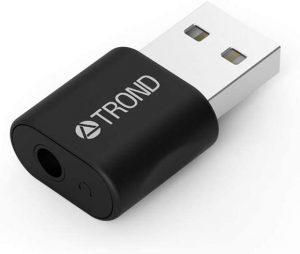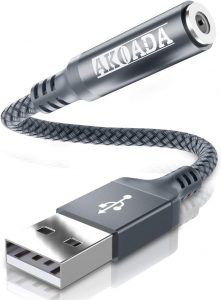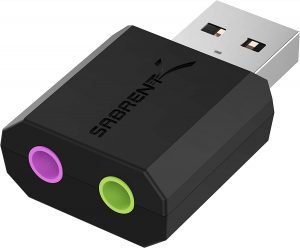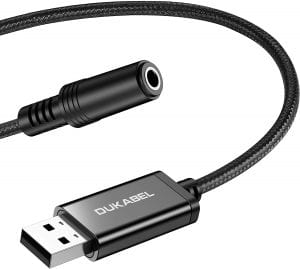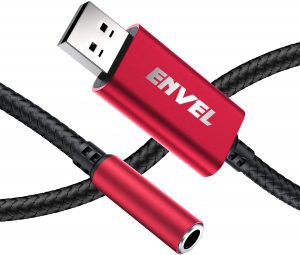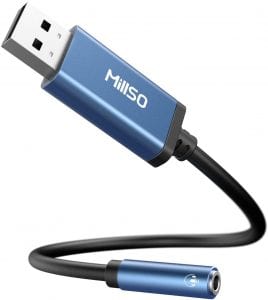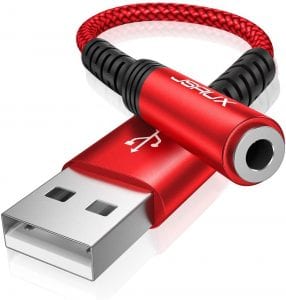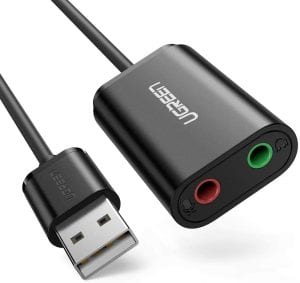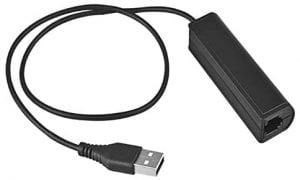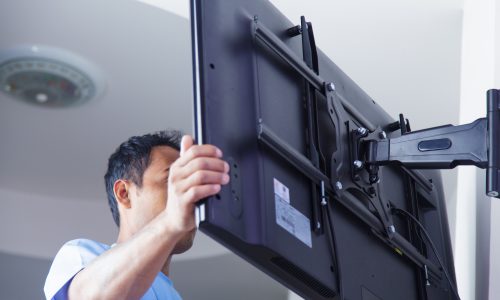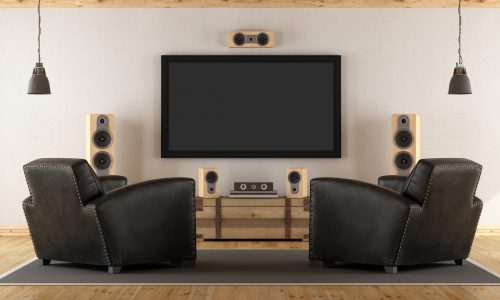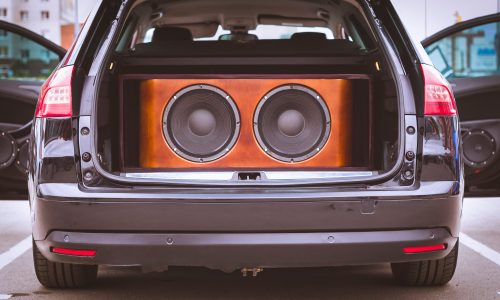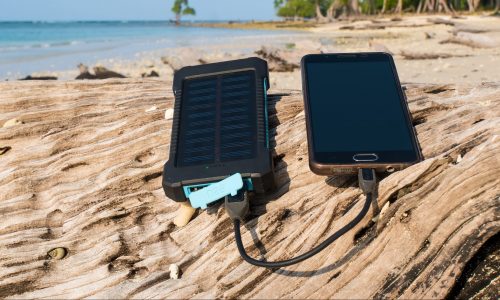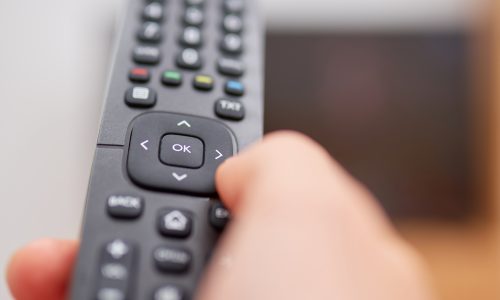The Best USB Headset Adapter
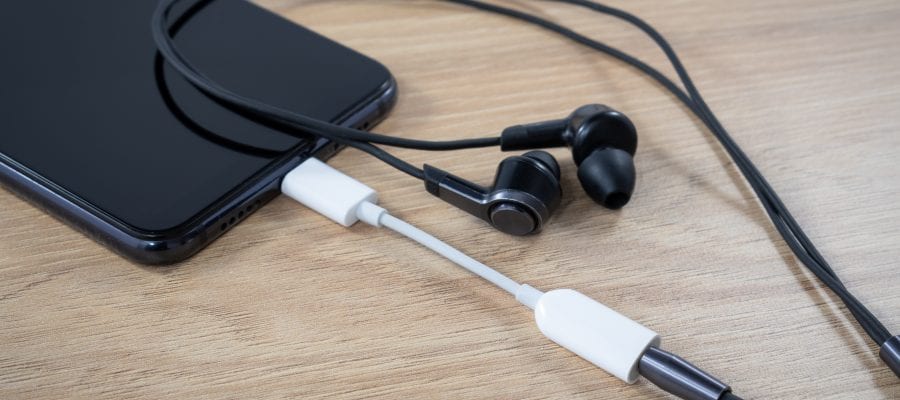
Our Review Process
Don't Waste Your Money is focused on helping you make the best purchasing decision. Our team of experts spends hundreds of hours analyzing, testing, and researching products so you don't have to. Learn more.
Our Picks For The Top USB Headset Adapters
- 1. TROND Wide Compatibility Driver-Free USB Headset Adapter
- 2. AkoaDa Plug & Play Compact USB Headset Adapter
- 3. Sabrent Compact External USB Headset Adapter
- 4. DuKabel ProSeries USB Headset Jack Audio Adapter
- 5. ENVEL Professional Wide Compatibility USB Headset Adapter
- 6. MillSO Gaming USB To 3.5mm Audio Jack Headset Adapter
- 7. JSAUX Built-In Smart Chip USB Headset Audio Adapter
- 8. UGREEN Record & Listen USB Audio Headset Adapter
- 9. WirelessFinest RJ9 Wired USB Headset Adapter
If you have a faulty sound card, you'll want to grab this USB headset adapter. The adapter quickly connects your headset to PlayStation gaming devices, laptop computers and tablets. It's important to note that this device won't work on your home TV on in your family vehicle.
Economical PickWhen shopping on a budget, you'll find this USB headset adapter is quite affordable.
This USB headset adapter is available in blue, red or gray. It's designed to support both listening and speaking and all you need to do is plug it in to begin using it. The adapter is compatible with Windows, Linux and Raspberry Pi. Since it features a built-in sound card chip, you can count on the sound quality being second to none.
Dual-Purpose OptionThis USB headset adapter is compact and easily portable.
With this USB headset adapter, you'll be able to record and listen to your favorite audio. It's both universally compatible and user-friendly. The adapter's tiny size makes it portable, so you can easily take it with you to work or school.
Easy to UseNo external power is required to use this USB headset adapter.
Featuring a single 3.5-millimeter port, this USB headset adapter is available in 9.8-inch and 47-inch lengths for flexibility. It's widely compatible with computers, tablets and gaming consoles and accepts various types of headsets.
Wide CompatibilityNot only can you get a long cable and wide compatibility with this option, but this adapter is also durable, with metal housing and a braided cable.
Buying Guide
If you want to use a wired headset or speakers with your computer or other devices, a USB port can offer a sturdier connection than a typical headphone port.
Luckily, you can purchase a USB headset adapter that makes it easy to plug your wired headset into any device with a USB port. These adapters are usually plug-and-play accessories so that you don’t have to worry about installing anything to make them work.
Some USB headset adapters feature only one 3.5-millimeter audio jack or RJ9 headset connector so that you can plug in a single headset cable. Available as the most compact and simple option that usually doesn’t block other USB ports, these adapters have combination interfaces to both send and receive sound through that single connection.
You can also find USB headset adapters that include two 3.5-millimeter jacks where you can plug in headphone and microphone cables. This kind of adapter is a great option when you want to use a headset with separate headphone and mic cords or even separate headphones and a mic. However, this option can be bulkier and lead to an adapter that ends up covering more than one of your USB ports.
Regardless of the USB headset adapter you choose, you should check compatibility to avoid issues. For example, some options advertise themselves as not compatible with Apple computers, while others mention they work with most gaming consoles and tablets as well as computers.
Lastly, don’t forget to consider the adapter’s size and length when you’re comparing products. You can find USB headset adapters with longer USB cords that give you more flexibility along with short, compact cords for when cord management is your top priority.
What to Look For
- When choosing a USB headphone adapter, be sure it won’t block your device’s other USB ports, especially if you’re using it with a laptop where the ports are few and close together. Some adapters are wide and can easily block one or more ports to the side. You may consider a slimmer option or a separate USB cable extender to avoid any inconvenience.
- If your headset has a shorter cord, consider how far away the USB port is from you. For headsets with long cords, a compact dongle-style adapter can work fine, especially if you’re plugging it into a laptop in front of you. However, you may consider an adapter that has a longer USB cable attached if you need some extra cord length, such as when you’re plugging the adapter into the back of a desktop computer.
- Some USB headset adapters advertise anti-interference features that you may consider if you plan to use multiple sound devices at once. Otherwise, you might experience issues with electromagnetic interference and not get the best sound quality available.
- While USB headset adapters often support stereo audio for listening, you’ll usually find they only allow for mono audio for speaking. If you want high-quality microphone audio, you could consider using a separate USB microphone.
More to Explore
Whether you’re working from home, playing games online or having a video chat with friends, headsets that let you listen and speak have become even more popular these days. But surprisingly, they actually have roots all the way back in the early 1900s.
An American electrical engineer named Nathaniel Baldwin came up with the device, and the U.S. Navy became his first customer. Military pilots found the device handy for hands-free communication, but the headsets at the time were much bulkier than the lightweight ones we have today. Luckily, lighter versions started coming out in the 1960s, so that both pilots and systems operators wouldn’t have to deal with the discomfort of bulky headsets while doing their work.

